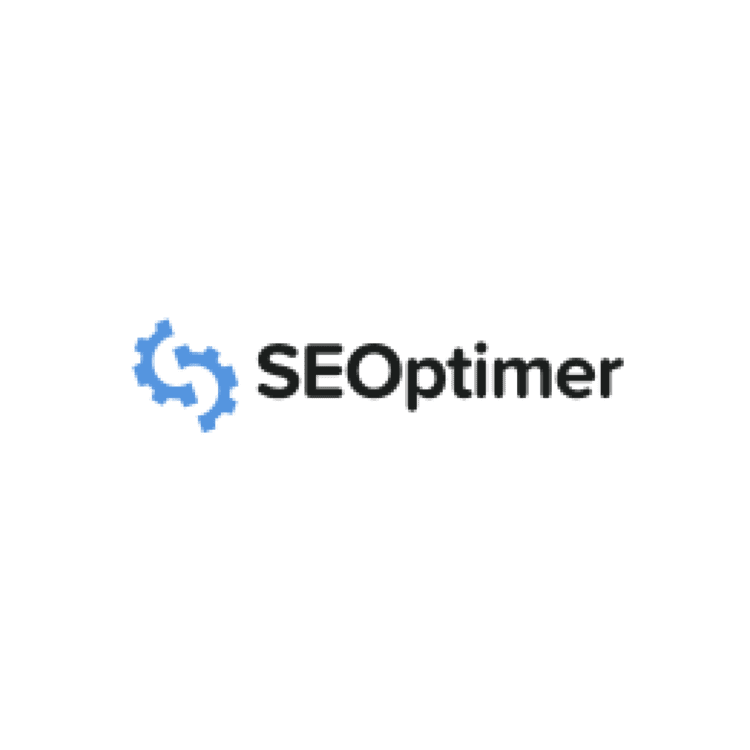
Keep Calm And Market On: 3 Marketing Tactics To Do During A Crisis
Keep Calm And Market On: 3 Marketing Tactics To Do During A Crisis

Written By

In the midst of the corona-virus pandemic, companies— as they should be— are focused on taking care of their most important audiences: their employees and existing customers. Lead generation has taken a backseat, as leaders look to either preserve this budget for when things settle, or reallocate it to more pressing areas. This is the right move, as most lead gen communications would be neither socially nor financially responsible at the current moment, unless your product or service is a critical necessity during this crisis. Anything else may feel exploitative, and right now we only need empathy.
Despite this, we don’t recommend that growing businesses pause all marketing activity. Why? Because although human health is of utmost priority right now, we recognize that for many of you, the health of your business is also at stake. When this terrible turn of events does begin to turn around, you may feel as though you’re starting at square one, scrambling to make up ground as quickly as possible. You’ll likely increase your spend on lead generation, but you’ll be pitted against a more competitive landscape than usual, as many others will have the same idea. By keeping some marketing activities turned on, you will lessen this effect.
So, which marketing activities do you focus on right now? In this post, we’ve outlined three foundational marketing tactics to execute or maintain during a crisis. When you do reactivate your lead gen and the world rights itself, your business will be in a better position for success.

1. Take a look under the hood…of your website and complete an SEO audit
Conducting a semi-regular SEO audit of your website is a marketing best practice, but it often falls through the cracks. The real world gets in the way, and marketers are pulled in a variety of different directions. We also often face clients or organizational higher-ups who find it difficult to understand the value of SEO, since results aren’t immediate. Prioritizing SEO is important, though, because it enables your website to rank for certain keywords related to your offering. In other words, when a prospective customer types a related keyword or phrase into Google, your website will appear within the first few pages of results. SEO ensures your target audience is always able to find you through an organic search, using your most relevant keywords.
Before running the audit, you should first check out your SEO Score, which you can do for free. This will give you the opportunity to understand just how much work you have to do. It also allows you to compare yourself against competitors and set realistic expectations for what you can achieve going forward with your site.
After you’ve obtained your SEO score, it’s time for the audit. The good news is that there are plenty of great tools online to help you do it, including, but not limited to:
Once you’ve used one of these tools to complete your SEO audit, you should receive an output document that provides areas for improvement. The below screenshot is a sample audit for &Marketing, using SEMRush.

As you can see, this sample company has a little bit of work to do. From this page, we can identify the most pressing issues and develop a strategy to make improvements. Obviously, there are a few technical aspects to solve for, such as site speed, but there are things that are easy to do that don’t involve back-end manipulation.

Update Keyword Research
First, do keyword research to determine the gaps within organic rankings and where competitors are outranking you for high value terms. If you find you’re not ranking for certain keywords but should be, tweak your website copy to ensure it includes those words or phrases (but avoid keyword stuffing!).

Install an SEO Plug-in
Second, implement an SEO plug-in. If you’re on WordPress, we recommend Yoast SEO, as it shows us if your pages are green (SEO is great!), yellow (opportunity to optimize SEO) or red (SEO needs some work!). This helps optimize each page of your site.

Enhance Your Site’s Security
Finally, as we look to the future, there are changes on the horizon. Privacy and accessibility issues are poised to become more prominent and have the potential for legal action. Check your state and federal guidelines – including those of your main audiences (hello GDPR!) – to see what you might need to add or amend. We recommend the WAVE web accessibility evaluation tool to ensure all of your forms are secure and that they have cookie policies and bars installed. You can even add a browser extension, which provides you an overview of issues, so you can nip them in the bud before they become a legal issue.
Once you’ve optimized your site, it takes a good three to six months to see major changes organically. Since your lead generation is on the back-burner right now, you can use this time to get your SEO and website up to speed (pun intended).
For further information about SEO audits, aHREFs wrote this great piece!

2. Generate Content
As you optimize your site for SEO, the updated keyword research will show you which keywords or phrases your audience has searched for when they’ve found your website, as well as any other keywords that are relevant to your industry or used by competitors. These keywords provide inspiration for creating content that will both resonate with your audience and begin to climb its way up Google organically. Content will also fuel your lead gen efforts later on, so it’s good to get prepared now if you have the time.
Given that many businesses are slowing down and thought leadership and professional development events have been cancelled or postponed, your audience may be spending more time online to consume content, sharpen their skills, and take advice from thought leaders.
Creating digital content around keywords and topics with high search volume is an excellent way to educate your target audience on topics they care about. Important to note, though, that during this time of crisis, you want to be sensitive with the content you produce. For example, you could consider how the pandemic impacts your industry, customers, and prospects, and create a point-of-view blog post with advice on how to navigate the current situation. You could even poll your audience via email or social media asking, “What do you want to hear from us right now?” There’s a way to bring value to your audience, without being promotional or exploitative.
If you already have consistent content in place, then you could instead use this time to assess your content’s performance so far and determine any changes you should make to optimize your strategy in the coming months. For example, at &Marketing, we regularly use a Business Intelligence & Analytics platform to dig deep into our audience and the terms and phrases they use online. Through this, we can keep a pulse on what they’re searching for, optimize our content to reach them organically, and identify topics that will convert and drive leads. We’re also able to precisely measure the value of each piece of content so that we can make changes as needed.

3. Optimize your current marketing strategy with Business Intelligence & Analytics
As you optimize your site for SEO, the updated keyword research will show you which keywords or phrases your audience has searched for when they’ve found your website, as well as any other keywords that are relevant to your industry or used by competitors. These keywords provide inspiration for creating content that will both resonate with your audience and begin to climb its way up Google organically. Content will also fuel your lead gen efforts later on, so it’s good to get prepared now if you have the time.
Given that many businesses are slowing down and thought leadership and professional development events have been cancelled or postponed, your audience may be spending more time online to consume content, sharpen their skills, and take advice from thought leaders.
Creating digital content around keywords and topics with high search volume is an excellent way to educate your target audience on topics they care about. Important to note, though, that during this time of crisis, you want to be sensitive with the content you produce. For example, you could consider how the pandemic impacts your industry, customers, and prospects, and create a point-of-view blog post with advice on how to navigate the current situation. You could even poll your audience via email or social media asking, “What do you want to hear from us right now?” There’s a way to bring value to your audience, without being promotional or exploitative.
If you already have consistent content in place, then you could instead use this time to assess your content’s performance so far and determine any changes you should make to optimize your strategy in the coming months. For example, at &Marketing, we regularly use a Business Intelligence & Analytics platform to dig deep into our audience and the terms and phrases they use online. Through this, we can keep a pulse on what they’re searching for, optimize our content to reach them organically, and identify topics that will convert and drive leads. We’re also able to precisely measure the value of each piece of content so that we can make changes as needed.
BI is particularly valuable for growing businesses, as it:
- Enhances cross-functional marketing strategies
- Identifies cost savings within digital campaigns
- Provides insights needed to create a strategic road map for growth
- Identifies target audiences
- Equips sales teams with warmer leads
- Provides intel for potential expansion areas
- Improves customer and client acquisition/retention through insights from sales and audience geographic
In Summary
We hope this post has provided valuable guidance for you as you work to navigate the unknowns of our current climate and prepare your business for the coming weeks and months ahead. Like most effective business tactics, the activities we’ve recommended here (doing an SEO audit, building your content library, and conducting an in-depth analysis) will require some level of time and resources. If you, like many companies, have halted paid advertising and lead generation, redirecting your focus to these marketing fundamentals may help ensure that you’re set-up for success once the storm passes.
We wish you, your team, and your business good health! 🧡
About the Author
As a Marketing Director at &Marketing, Paul Ferguson uses his 16 years of B2B marketing experience to help clients develop fully integrated marketing solutions that make impressions and drive results. Whether it be design-oriented campaigns or digital market execution, Paul skillfully creates strategies backed by data, to effectively reach client’s desired audiences. Paul graduated from La Salle University with a Bachelor of Arts in Communication and a double minor in Marketing and Business Administration. Visit Paul’s LinkedIn.
About &Marketing
In today’s fast paced world, many growing businesses are struggling to modernize their marketing approaches because either they don’t have the expertise or the bandwidth to do it themselves.
&Marketing provides seasoned marketing strategy professionals and a nimble execution team to help our clients achieve their goals. Our unique partnership model allows us to augment our client’s existing teams or outsource the entire marketing function in an affordable, flexible, and transparent way.




Recent Comments